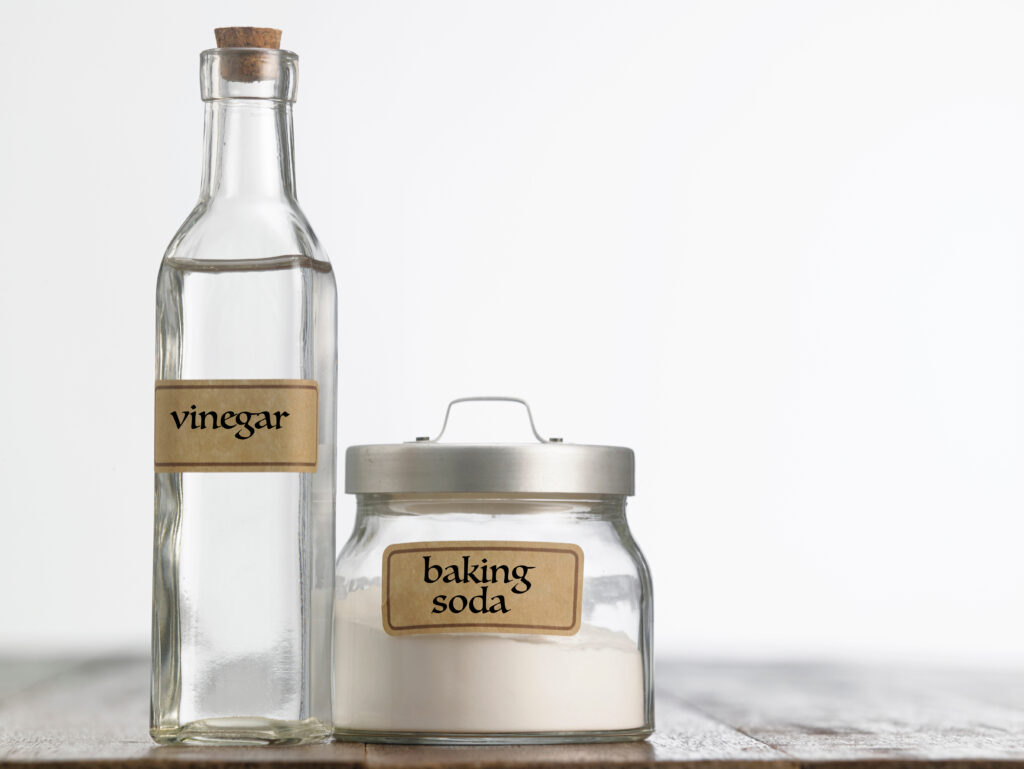Some of the links on this page are affiliate links, which means that Buzzy Kitchen earns commission from purchases made – at absolutely no extra cost to you. Thank you so much for supporting Buzzy Kitchen!
Welcome to the world of baking! In this delightful journey, we’ll explore the magic of baking powder—a key ingredient that transforms ordinary ingredients into mouthwatering treats. Specifically, we’re going to answer the question: What can I use instead of baking powder?
Join us as we unravel the science behind its leavening power and discover the joy of creating light and airy masterpieces. Let’s dive in and unlock the secrets of baking powder’s enchanting charm!
What is Baking Powder?
Baking powder is a leavening agent commonly used in baking to help baked goods rise and become light and fluffy. It is a dry chemical mixture made up of three main components:
1: Baking Soda (Sodium Bicarbonate)
Baking soda is the alkaline component of baking powder. When it comes into contact with acidic ingredients like buttermilk, vinegar, or yogurt in the batter, it produces carbon dioxide gas, which causes the batter to expand and rise.
2: Cream of Tartar (Potassium Bitartrate)
Cream of tartar is an acidic component that activates the baking soda in the mixture. It helps to stabilize the carbon dioxide bubbles produced during baking, resulting in a more consistent rise.
3: Cornstarch
Cornstarch serves as a filler to prevent the baking soda and cream of tartar from reacting prematurely while in the container. It also helps to absorb moisture and keep the mixture dry.
When baking powder is combined with wet ingredients in a recipe and exposed to heat, the chemical reaction between the baking soda and the acidic component produces carbon dioxide gas bubbles. These bubbles get trapped in the dough or batter, causing it to rise and expand, resulting in a lighter texture and increased volume in the final baked product.
Why is Baking Powder So Important?
Unlike baking soda, which requires an acidic ingredient to activate its leavening properties, baking powder already contains both the alkaline and acidic components in the right proportions, making it a convenient and versatile leavening agent for various baked goods.
It’s important to follow the recommended measurements of baking powder in recipes, as using too much or too little can affect the texture and taste of the final product.
Additionally, if a recipe calls for baking powder, it’s generally not advisable to substitute it with baking soda, as the two leavening agents react differently and may lead to unexpected results in the baked goods.
What Can I Use Instead of Baking Powder?
At a push, there are substitutes you can use to take the place of baking powder. Let’s take a look at what they are and explore their limitations.
Baking Soda
Baking soda is a common substitute for baking powder. However, it is important to note that baking soda is about three times stronger than baking powder.

For every teaspoon of baking powder that a recipe calls for, use only 1/4 teaspoon of baking soda, and remember to add an acidic ingredient like lemon juice, vinegar, or buttermilk to activate the baking soda.
Cream of Tartar
Cream of tartar can be used as a substitute for baking powder when mixed with baking soda. For one teaspoon of baking powder, use 1/4 teaspoon of baking soda and 1/2 teaspoon of cream of tartar.
Self-Rising Flour
If your recipe calls for both flour and baking powder, you can use self-rising flour as a replacement. Self-rising flour already contains baking powder, so omit the additional baking powder from the recipe.
Yoghurt or Buttermilk
If the recipe includes yoghurt or buttermilk, these acidic ingredients can react with baking soda to provide some leavening. Use 1/4 teaspoon of baking soda for every cup of yogurt or buttermilk.
Whipped Egg Whites
In some recipes, particularly those involving cakes or waffles, you can separate the egg whites and whip them until stiff peaks form. Fold the whipped egg whites gently into the batter to add some leavening.

In conclusion, baking powder is a crucial ingredient that helps create light, fluffy, and delicious baked goods by causing them to rise through a chemical reaction. Its balanced combination of baking soda, cream of tartar, and cornstarch ensures consistent and reliable results in your favorite recipes. Happy baking!
You might also like these:
- 22 Gluten Free Alternatives for Plain Flour
- What Can I Use Instead of Condensed Milk: 4 Substitutions
